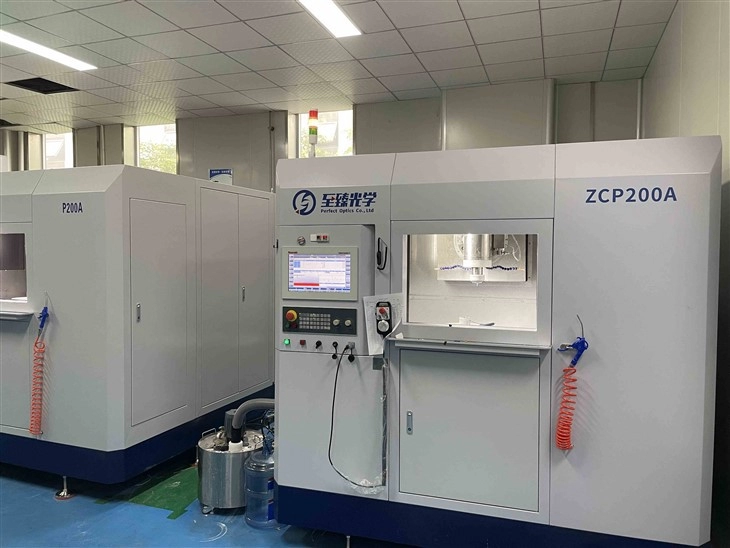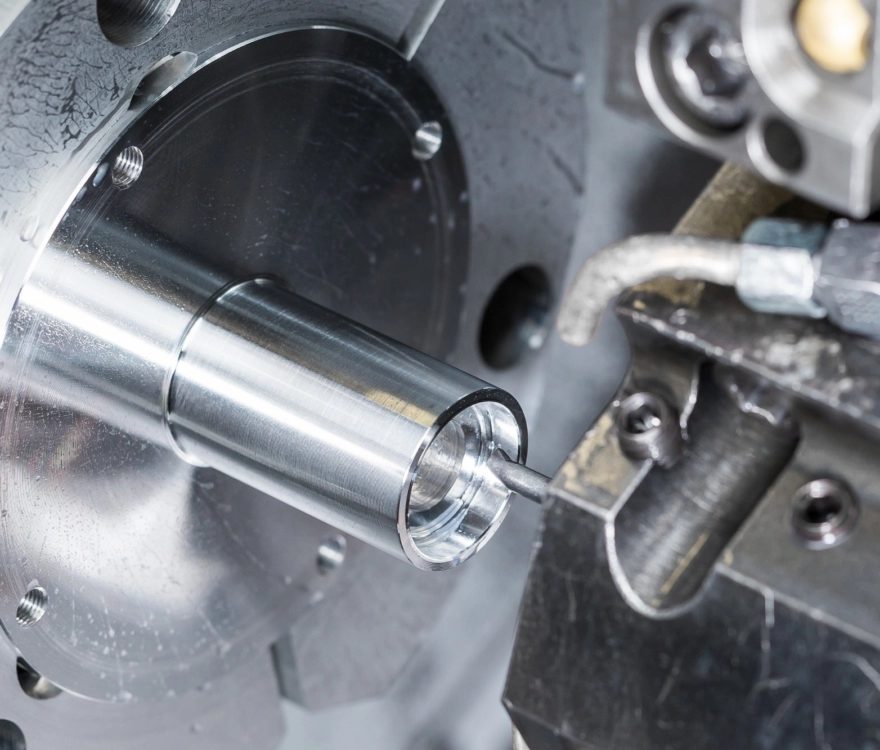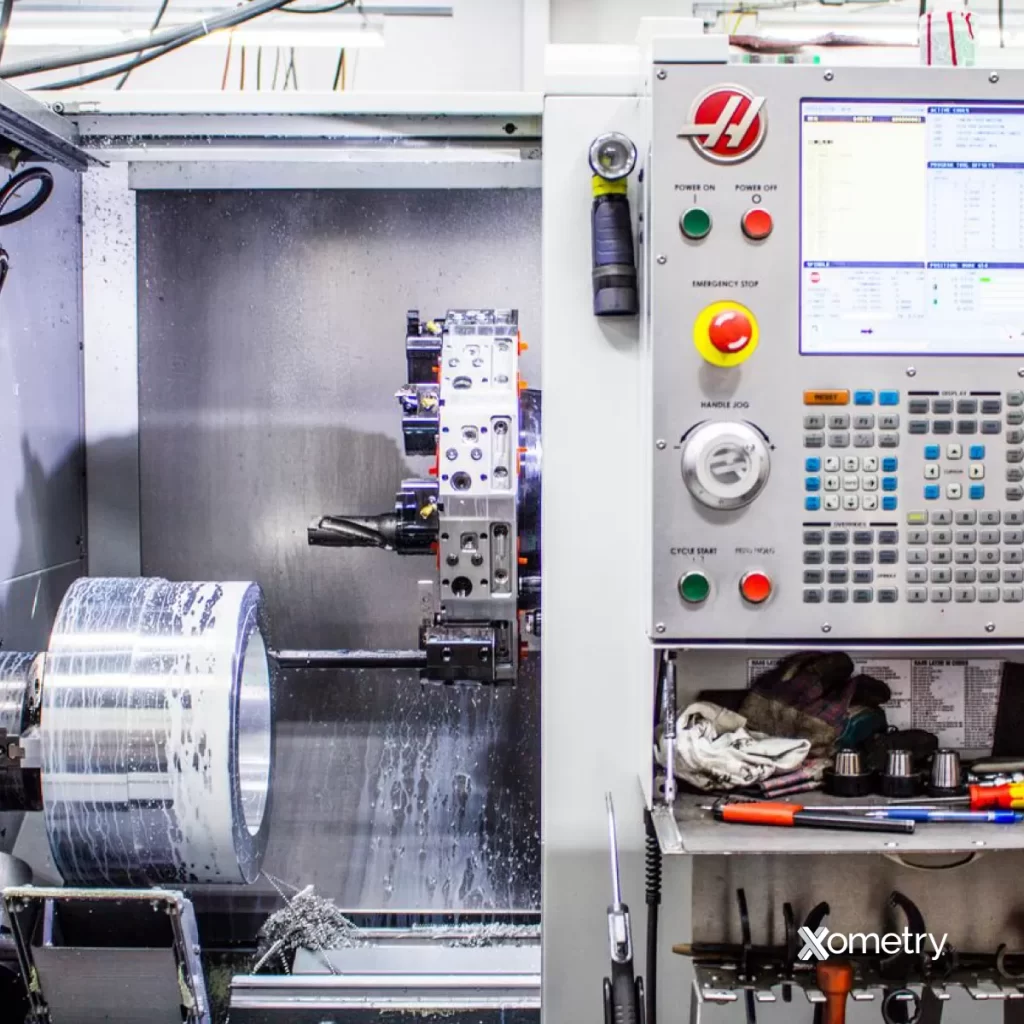Revolutionizing Steam Turbine Blade Polishing with 5 Axis CNC Machines
Steam turbine blades are at the heart of efficient power generation, and their surface quality directly impacts performance and durability. Traditional polishing methods struggle to meet the precision and consistency demanded by today’s energy and aerospace industries. That is where 5 axis CNC machine polishing has transformed the process.
Using advanced precision CNC polishing technology, 5 axis CNC machines can navigate the complex geometries of steam turbine blades with exceptional accuracy. Unlike older 3 axis machines that move on only three planes, 5 axis machines control movement along the X, Y, and Z axes plus two rotational axes (A and B or C). This multidirectional control allows for better tool alignment and smoother surface finishes.
This method dramatically improves turbine blade surface finishing, ensuring uniformity and minimizing imperfections on blades made from challenging materials like Inconel and titanium alloys. The result is a polished turbine blade that supports enhanced turbine efficiency, extends service life, and reduces maintenance costs.
For industries such as power plants, nuclear submarines, and aerospace, embracing 5 axis CNC machining means faster turnaround times and higher output consistency. This innovation doesn’t just polish blades — it revolutionizes how energy equipment is manufactured and maintained, raising the bar for what’s possible in steam turbine blade production.
What is 5 Axis CNC Machine Polishing for Steam Turbine Blades
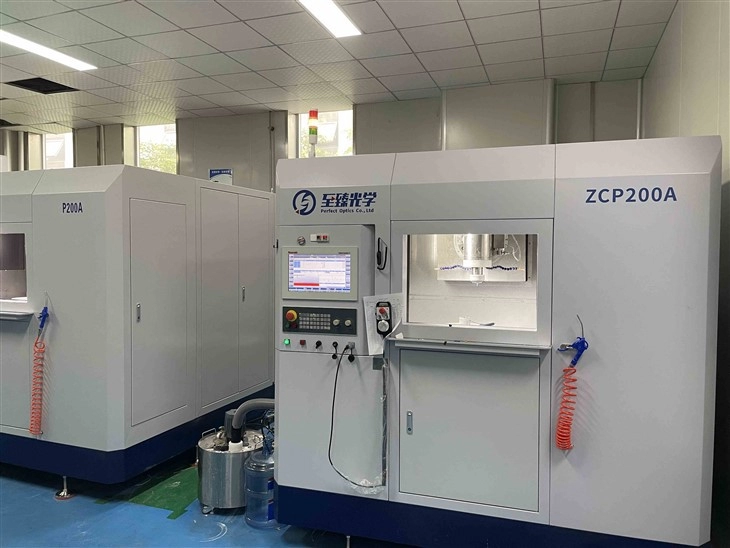
Overview of 5 Axis CNC Technology
5 axis CNC machine polishing uses advanced CNC technology that moves a polishing tool along five different axes—X, Y, Z plus A and B or sometimes C axes. This allows the tool to approach the turbine blade from almost any angle, enabling multidirectional precision. Unlike traditional 3 axis CNC machines, which only move in three linear directions (X, Y, Z), the 5 axis setup adds rotational movement on two more axes. This makes it possible to handle complex geometries with curves and angles that are tough to reach.
Key Components of 5 Axis CNC Machining
- X, Y, Z axes handle linear movement along width, depth, and height.
- A, B, and sometimes C axes provide rotational movement around these linear axes.
- These combined motions let the polishing tool follow the intricate contours of turbine blades precisely.
Why 5 Axis CNC Polishing is Ideal for Turbine Blades
Steam turbine blades have unique shapes with tight curves and uneven surfaces. 5 axis CNC polishing can access these hard-to-reach areas smoothly, delivering:
- Superior surface finishes that improve blade efficiency.
- The ability to maintain close tolerances crucial for blade balance and performance.
- Reduced risk of damage compared to manual polishing techniques.
This technology is perfect for precision CNC polishing of turbine blades made from tough materials like Inconel or titanium, commonly used in the energy and aerospace sectors across the U.S. market. It outperforms 3 axis machining in speed, accuracy, and consistency.
The Polishing Process for Steam Turbine Blades with 5 Axis CNC Machines
Polishing steam turbine blades with 5 axis CNC machines is a precise, multi-step process that ensures top-quality surface finishing. Here’s how we do it at HYCNC, blending advanced technology with expert know-how.
Step 1 Initial Inspection and Preparation of Blades
We begin with a thorough inspection of each blade to check for any damage or imperfections. Proper preparation like cleaning and mounting the blades securely is critical to get consistent results.
Step 2 CAD CAM Programming for Precise Tool Paths
Next, we use CAD CAM software to design the exact polishing paths. This programming accounts for the blade’s complex geometry, ensuring the polishing tool moves smoothly across all surfaces without missing spots.
Step 3 Automated Polishing with Abrasive Belts or Tools
With paths set, the 5 axis CNC machine performs automated polishing using high-quality abrasive belts or specialized polishing tools. This automation lets us achieve uniform surface finishes while handling tough materials like Inconel or titanium.
Step 4 Real Time Monitoring and Quality Control
During polishing, we use real-time monitoring systems to detect and correct any anomalies immediately. This step is essential for maintaining tight tolerances and avoiding surface defects.
Step 5 Final Inspection Using 3D Coordinate Measuring Machines CMM
After polishing, every blade goes through a detailed inspection with a 3D Coordinate Measuring Machine (CMM). This ensures the surface roughness and dimensions meet strict specifications before the blade moves on to assembly or shipping.
HYCNC Proprietary Techniques for Superior Surface Finishes
At HYCNC, we combine these steps with proprietary polishing techniques that boost surface smoothness and durability. These methods translate into better turbine efficiency and longer blade life, supporting critical industries like power generation and aerospace.
Benefits of 5 Axis CNC Machine Polishing for Steam Turbine Blades
Using 5 axis CNC machining for polishing steam turbine blades offers several clear advantages that make a big difference in performance and efficiency. Here’s why switching to this technology is a smart move in the US energy and aerospace sectors.
Unmatched Precision and Surface Smoothness
5 axis CNC polishing delivers extremely precise surface finishes, often achieving roughness values of Ra less than 0.559 μm. This level of smoothness means the blades experience less friction and better airflow, which directly improves turbine performance.
Enhanced Turbine Efficiency and Energy Output
A polished turbine blade cuts through steam more smoothly, leading to higher efficiency and increased energy output. That means power plants and industrial turbines get more reliable, cost-effective operation while reducing fuel consumption.
Reduced Wear Fatigue and Maintenance Costs
The precision finish reduces surface imperfections that can cause wear and fatigue over time. This leads to longer blade life, fewer repairs, and a drop in maintenance expenses—key factors for operators of power plants and nuclear submarines who depend on durability.
Faster Turnaround Times Compared to Manual Polishing
With automated abrasive belt polishing on 5 axis CNC machines, processes are up to 20 times faster than traditional hand polishing. This speed boosts production efficiency without sacrificing quality, ideal for large manufacturing volumes in aerospace and energy applications.
Consistency Across Large Production Volumes
Manual polishing can vary blade to blade, but automated CNC polishing offers consistent, repeatable results. This consistency is crucial when producing batches of steam turbine blades that must meet tight specifications for critical systems.
Wide Range of Industry Applications
5 axis CNC polishing is not just for power plants. It’s also proven effective in nuclear submarine turbines and aerospace components, where precision and reliability are non-negotiable. This technology supports material handling like Inconel and titanium, common in these industries.
By choosing 5 axis CNC steam turbine blade surface finishing, you get top-tier precision, efficiency gains, and cost savings, all tailored for the stringent demands of US energy and aerospace markets.
Why Choose HYCNC for 5 Axis CNC Machine Polishing of Steam Turbine Blades
When it comes to 5 axis CNC machine polishing of steam turbine blades, HYCNC stands out for several reasons. We combine advanced technology with deep industry know-how to deliver top-quality surface finishes that meet the toughest standards.
Advanced Equipment and Software
- We use state-of-the-art 5 axis CNC machines capable of handling complex geometries with precision.
- Our operations are powered by Unigraphics NX software, ensuring highly accurate CAD CAM programming and smooth tool paths.
- This combination lets us consistently produce mirror-smooth finishes on turbine blades, including those made from tough materials like Inconel and titanium.
Expertise in Steam Turbine Blade Manufacturing
- Our team has extensive experience in steam turbine blade manufacturing, understanding the critical requirements for performance and durability.
- We specialize in polishing blades used in demanding sectors like energy production, nuclear submarines, and marine applications.
Rigorous Quality Assurance and Inspection
- Every blade polished by HYCNC undergoes strict quality checks using 3D coordinate measuring machines (CMM).
- Our real-time monitoring during polishing ensures surfaces stay within ultra-tight tolerances such as Ra less than 0.559 μm.
- This leads to enhanced turbine efficiency, reduced wear, and longer service life.
Customized Solutions for Energy and Marine Industries
- We offer tailored polishing solutions designed specifically for the unique needs of the power generation and marine markets.
- These bespoke services help clients optimize blade performance and reduce maintenance cycles, delivering real cost savings.
Global Reach with Localized Support
- HYCNC serves customers across the United States and globally, providing localized customer support.
- Our flexible approach helps us quickly adapt to regional standards and client specifications.
Proven Success in Turbine Blade Polishing
- One recent case involved polishing a batch of steam turbine blades for a major power plant, where we improved surface finish and cycle time by 25%.
- Clients trust HYCNC for delivering consistent, high-quality results on complex, high-volume jobs.
Choosing HYCNC means you’re partnering with a reliable expert in precision CNC polishing that understands the demands of steam turbine blade manufacturing in the U.S. market.
Challenges and Solutions in 5 Axis CNC Machine Polishing of Steam Turbine Blades
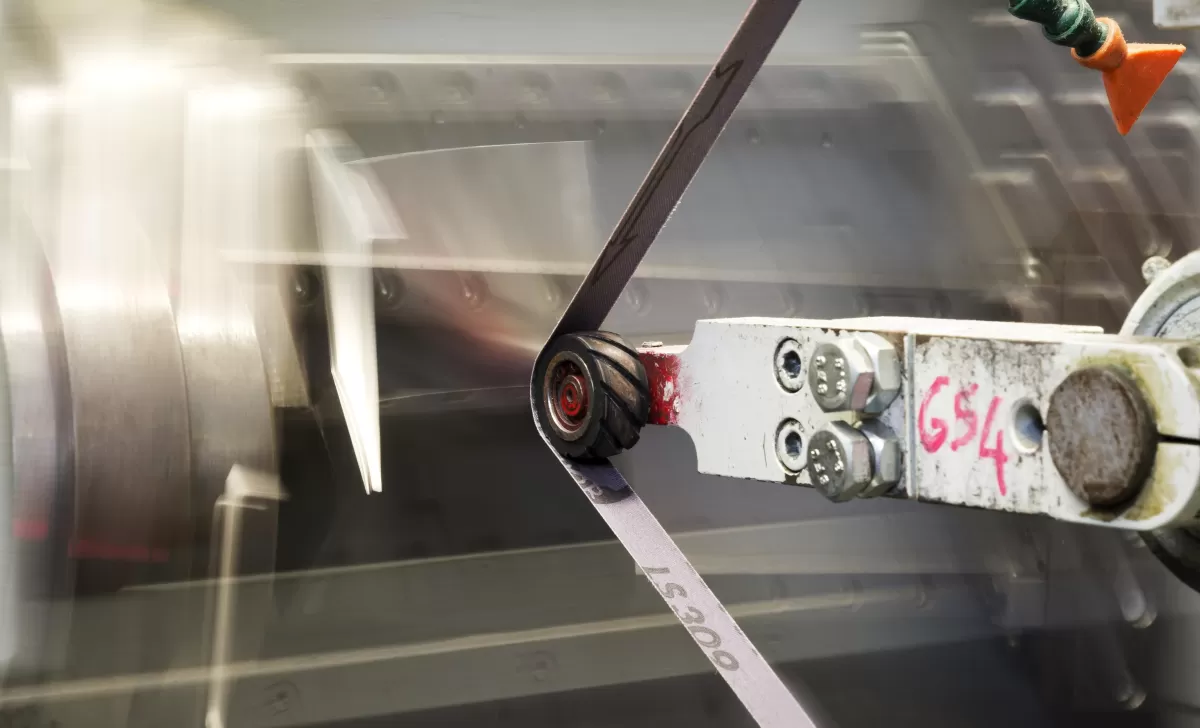
Polishing steam turbine blades isn’t easy. The blades have complex shapes with tight tolerances that demand high precision. On top of that, materials like Inconel and titanium pose extra challenges because they’re tough to machine and polish smoothly.
Tackling Complex Geometries and Tight Tolerances
Steam turbine blades have curved surfaces and intricate features. Traditional polishing methods often struggle to reach all areas without risking damage. With 5 axis CNC machining, we can move the blade and tool in multiple directions (X, Y, Z, plus A and B rotation axes), which means every nook and curve gets polished evenly, meeting strict tolerance requirements.
Addressing Material Challenges Like Inconel and Titanium
Materials like Inconel and titanium are great for performance but tough on tooling because they’re hard and heat resistant. At HYCNC, we use specialized abrasive belts and polishing tools designed for these materials. Our CAD CAM programming plans optimized tool paths that reduce wear and heat buildup, keeping the surface intact.
Overcoming Vibration and Surface Imperfections
Vibration during polishing can cause rough finishes or warping. To solve this, our 5 axis CNC machines feature advanced stabilization technology that minimizes chatter and keeps polishing smooth. We also use real-time monitoring to adjust feed rates and pressure, eliminating surface imperfections early.
How HYCNC Uses Advanced Technology to Solve These Issues
- Precision multi-axis control for perfect alignment and tool movement
- Custom abrasive tools tailored for tough materials
- Real-time sensors monitoring surface finish and machine status
- Automated feedback loops for consistent polishing quality
- Integration with 3D coordinate measuring machines (CMM) to verify every detail after polishing
By combining high-tech equipment with deep expertise, HYCNC ensures that every steam turbine blade meets the highest quality standards, even with the toughest materials and most demanding shapes.
Future Trends in 5 Axis CNC Machine Polishing of Steam Turbine Blades
The future of 5 axis CNC polishing for steam turbine blades is packed with exciting advances that bring smarter, greener, and more precise machining to the table. Here’s what’s shaping up in this space:
Integration with AI and Real-Time Analytics
- Artificial intelligence (AI) is becoming a game changer in CNC machining. By incorporating AI, machines can learn from previous jobs to improve polishing accuracy and reduce errors automatically.
- Real-time analytics helps monitor the polishing process live, catching potential defects early and adjusting tool paths on the fly. This means better surface finish and fewer reworks.
Advances in Abrasive Materials and Cooling Techniques
- New abrasive materials are being developed to last longer and polish surfaces more efficiently. These innovations lead to smoother finishes on tough materials like Inconel and titanium used in turbine blades.
- Improved cooling methods help maintain optimal temperature during polishing. This reduces tool wear and prevents heat damage to delicate blade surfaces, increasing the overall quality and lifespan of the blades.
Growing Demand for Sustainable Machining Processes
- Sustainability is gaining ground in the manufacturing sector. Eco-friendly polishing methods that minimize waste and lower energy consumption are the future.
- 5 axis CNC polishing is moving towards green machining by optimizing tool usage and reducing the need for manual touch-ups, which supports environmental goals without sacrificing precision.
HYCNC’s Commitment to Innovation
At HYCNC, we are focused on staying ahead by adopting these future trends. Our use of the latest software, like Unigraphics NX, and cutting-edge hardware ensures we deliver top-tier polishing services. We continuously invest in:
- Research and development of new polishing techniques
- Integrating AI and analytics into our workflows
- Sustainable practices that meet customer demands for efficiency and environmental responsibility
This forward-thinking approach guarantees that our steam turbine blade polishing meets the evolving needs of the U.S. energy, marine, and aerospace markets with unmatched consistency and quality.
FAQs About 5 Axis CNC Machine Polishing of Steam Turbine Blades
What Makes 5 Axis CNC Machines Better for Turbine Blade Polishing
5 axis CNC machines offer unmatched precision by moving tools and the blade across multiple axes (X, Y, Z, plus rotational A and B axes). This flexibility handles the complex shapes of steam turbine blades far better than traditional 3 axis machines. It allows for smoother, more accurate polishing on all surfaces, improving surface finish quality and reducing errors.
How Long Does the Polishing Process Take with HYCNC
The polishing time varies depending on blade size and material but using our advanced 5 axis CNC technology, HYCNC can polish turbine blades up to 20 times faster than manual methods. We streamline the entire process from programming to real-time monitoring to ensure fast turnaround without compromising quality.
Can HYCNC Handle High Volume Turbine Blade Production
Absolutely. Our state-of-the-art 5 axis CNC machines combined with automated abrasive belt polishing tools allow us to maintain consistent quality across large production runs. This scalability makes us a trusted partner for industries like power generation, aerospace, and naval applications needing reliable, high-volume blade polishing.
What Materials Are Compatible with 5 Axis CNC Polishing
Our system handles common turbine blade materials such as Inconel, titanium, and other high-strength alloys used in nuclear submarines and power plants. The versatility of our 5 axis machines lets us polish even the toughest materials with precise control, achieving superior surface finishes every time.
How Does HYCNC Ensure Quality Control
We back our polishing service with rigorous quality checks:
- Real-time monitoring during polishing to catch and correct issues on the fly
- Final inspections using 3D coordinate measuring machines (CMM) to verify surface smoothness and dimensional accuracy
- Proprietary polishing techniques designed for steam turbine blades that meet strict industry standards
This multi-layered approach ensures every blade leaving HYCNC meets or exceeds customer expectations for durability and performance.

